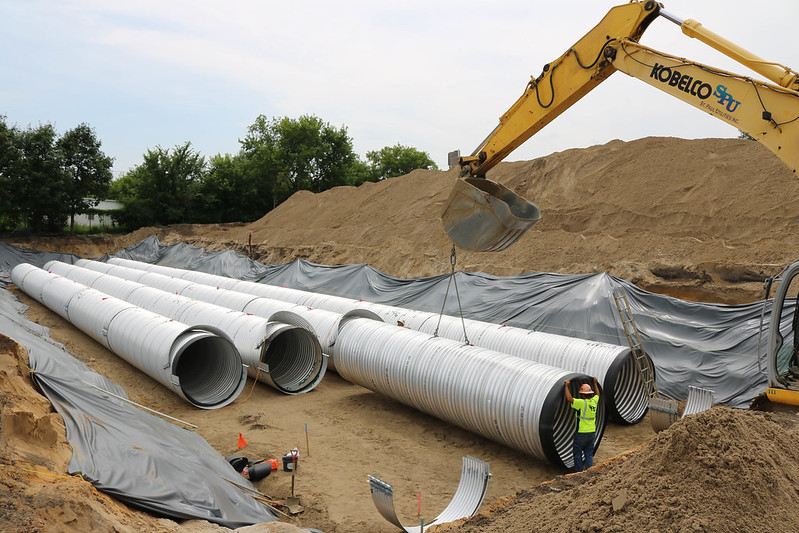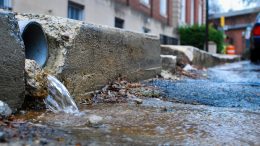Climate change and other environmental pressures are already putting the pinch on water resources in California, the Southwest and other arid parts of the world. Over-tapped groundwater, rivers and lakes are forcing water managers to find new supplies.
Some of these can be costly, like treating wastewater for drinking water. Or they can come with a hefty price tag and outsized environmental footprint, like desalination or new dams.
There’s another option on the table, though: stormwater. If we do the accounting right, runoff from precipitation is a cost-effective supplementary water resource, experts say. But it’s often overlooked because we don’t know how to fully assess the economics of its many benefits, finds a report by Sarah E. Diringer, Morgan Shimabuku and Heather Cooley of the global water think-tank the Pacific Institute.
The water that runs off hard surfaces like streets and roofs has typically been considered a nuisance. It can result in flooding and cause water-quality concerns. Usually it’s directed into storm drains in urban areas and funneled to treatment plants or, in coastal communities, dumped into the ocean.
But in our water-constrained world, stormwater can be a benefit and not a burden. For example, a 2014 report found that urban communities in the San Francisco Bay Area and Southern California could get up to 10% of their water supply from stormwater.
Stormwater projects vary in size, scale and scope. Some can be small-scale harvesting projects that can collect rainwater from rooftops before it flows across city streets. Others are large aquifer-recharge efforts where stormwater (or sometimes floodwater outside urban areas) is infiltrated back into the ground to boost overdrafted groundwater.

Many stormwater projects can provide additional benefits besides just supplementing the water supply. Experts have found they can also reduce flood risk, improve habitat, reduce urban temperatures and energy use, create recreational space, and increase property values.
For their study, the Pacific Institute researchers looked at dozens of proposed projects in California. They found that properly accounting for all these additional benefits can be difficult and is often overlooked as water agencies and municipalities compare the economics of different options to boost water resources.
If stormwater doesn’t appear cost-competitive, it’s much harder to get the capital necessary to build and scale new projects. That can cause municipalities to miss out on a potential source of water — and its other associated benefits.
The researchers say including stormwater projects’ economic benefits in the way those projects are presented to community decision-makers could help make runoff capture and use more widespread.
“By including the economic value of co-benefits provided by stormwater capture, projects can be more fairly compared, and the full benefits of these projects can more easily be realized by water agencies and the public they serve,” the researchers wrote.
As climate change brings both bigger storms and bigger droughts, harnessing the potential of stormwater capture could become a crucial tool for resilience.
![]()


